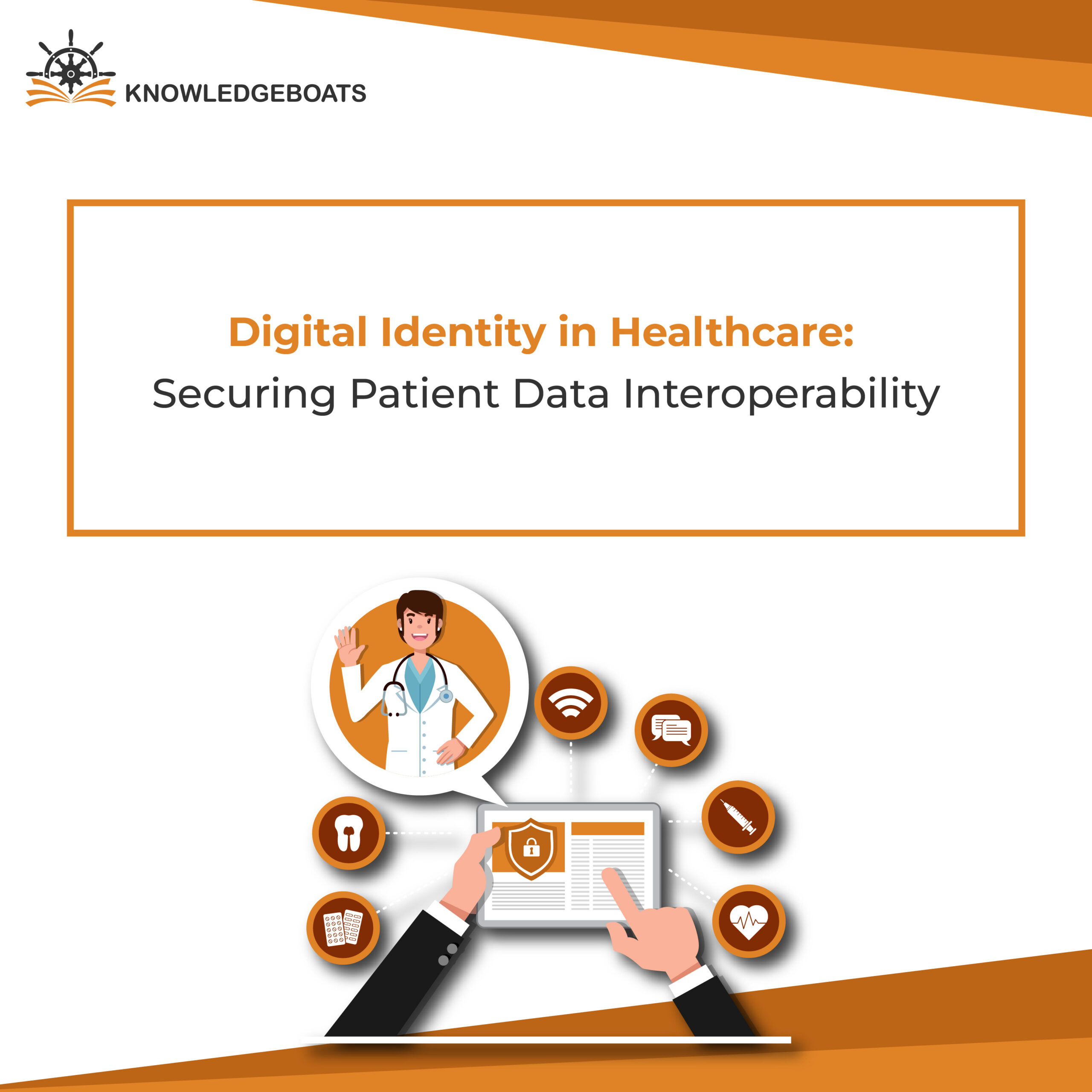
In our increasingly digital world, it’s a truth we can no longer ignore: our online presence isn’t just significant; it’s often the defining element of how we engage, shaping experiences and interactions with an impact that frequently outstrips our physical selves. For the healthcare sector, this relentless digital tide presents a compelling, sometimes complex, paradox. On one side, it throws open the doors to incredible innovation and efficiency gains. On the other, it places squarely on our shoulders the profound, intricate responsibility of ensuring patient data moves not just seamlessly, but with unwavering, ironclad security. Let’s be clear: digital identity in healthcare isn’t some abstract concept for next year’s budget meeting. It’s a very real, very present necessity. In fact, it’s the bedrock, the foundational layer, upon which genuine patient data interoperability and truly resilient security absolutely must be meticulously engineered.
Just imagine, for a moment, this scenario: a healthcare ecosystem where every single detail of a patient’s medical story – from their routine check-ups with the family doctor, through specialized consultations, right up to a critical emergency room visit – is instantaneously, securely, and accurately available to authorized clinicians. This isn’t simply a hopeful vision; it’s a strategic imperative, meticulously powered by sophisticated healthcare digital identity solutions. Envision the profound ripple effect: revolutionizing diagnostic pathways, enabling care that feels genuinely personal, and ultimately, driving measurably superior patient outcomes across the board. But let’s anchor ourselves in reality. Operationalizing this level of advanced healthcare identity management demands expertly navigating a complex labyrinth. We’re talking about stringent privacy regulations, an adversary landscape that’s constantly, frustratingly, evolving, and the often-thorny path of integrating disparate technological systems that weren’t built to play nice together.
What Is Digital Identity in Healthcare, Really? Forget the Old Login, This Is Deeper.
To truly grasp its strategic weight, we need to move past the superficial definitions and unpack what digital identity in healthcare genuinely embodies. Forget the simple username and password; that’s merely the entry point, the tip of the iceberg. Think of it, instead, as a comprehensive, verifiable electronic construct – essentially, a singular, unique digital DNA – representing all of an individual’s attributes within the vast, intricate healthcare apparatus. This isn’t a small data set. It encompasses a rich, broad spectrum of identifiers: detailed demographic specifics, those absolutely crucial unique medical record numbers, granular insurance particulars, and, increasingly, advanced biometric markers. The singular, overarching mission here? To forge a consistent, persistent, and unimpeachably trustworthy digital persona for every patient, every single clinician, and even every smart medical device humming along within the intricate web of healthcare IT systems.
The Interoperability Imperative: Why Procrastinating on Digital Identity Is a Non-Starter
The pivotal role of digital identity in healthcare interoperability simply cannot be overstated. Let’s consider interoperability itself – that absolutely critical capacity for disparate healthcare IT systems to not just “talk” to each other, but to truly understand and meaningfully act upon shared data, without an irrefutable, rock-solid mechanism to identify who is who, this entire, vital process grinds to a halt. When a robust digital identity framework is absent, patient data inevitably splinters. And what does that fragmentation lead to? A dangerous cascade of operational inefficiencies and, more alarmingly, direct clinical risks:
- Elevated Clinical Risk: Let’s not mince words here: incorrect or incomplete patient identification isn’t merely an administrative hiccup. It’s a direct, perilous pathway to erroneous treatments, critical medication errors, or clinicians having to rely on partial, sometimes dangerously misleading, medical histories. This directly jeopardizes patient safety and, frankly, undermines the very purpose of care.
- Operational Drag & Lost Productivity: Our clinical teams are already operating at peak capacity, often stretched incredibly thin. When they’re forced to spend invaluable time and precious energy trying to reconcile patient records scattered across unconnected systems, it’s not just inefficient. It’s a direct drain, pulling their invaluable focus away from the human beings who critically need their direct attention.
- Avoidable Financial Redundancy: Think about the ripple effect: when unified, reliable data isn’t readily available, what’s often the immediate consequence? Duplicative diagnostic tests become commonplace, and administrative overheads balloon. This isn’t just an abstract cost; it’s a tangible hit to an organization’s financial health, diverting resources that could be far better invested elsewhere.
- Eroding Patient Trust: We’ve all encountered that familiar frustration, haven’t we? Being asked for the same information again and again, or realizing your doctor doesn’t have your complete medical story. These seemingly minor points of friction accumulate, inevitably diminishing the patient experience and eroding their fundamental confidence in the entire healthcare system.
Let’s be unequivocal: patient data interoperability isn’t just industry jargon; it’s the transformative, overarching goal of modern healthcare delivery. And secure digital identity? It’s not just a beneficial add-on; it’s the absolutely indispensable, secure conduit ensuring that when data flows across these complex systems, it is unerringly attributed to the right individual. This, in turn, preserves the integrity and precision of their entire, unique medical journey.
Fortifying the Perimeter: Secure Digital Identity as an Absolutely Essential Defense Layer
While the operational and clinical advantages of interoperability are powerfully compelling, they come with a non-negotiable understanding: securing digital identity in healthcare is not just paramount; it’s existential. Patient data, perhaps more than any other personal information, is exquisitely sensitive, rendering it an exceptionally high-value target for increasingly sophisticated cyber threats. The real-world fallout from identity theft risks in healthcare systems can be profoundly devastating – ranging from outright financial fraud to the insidious, deeply personal compromise of critical medical care. This stark reality underscores a vital truth: digital identity and patient data security aren’t merely intertwined; they are, quite simply, two sides of the same essential, precious coin.
Strategic Approaches: Navigating the Nuances of Modern Healthcare Identity Management
Effective identity management in healthcare IT systems demands a holistic, multi-layered strategic approach. This isn’t just about patching individual vulnerabilities; it’s about architecting an intelligent, adaptive defense system that thoughtfully encompasses:
- Patient Identity Governance: This is the meticulous process of establishing and rigorously maintaining a unique, verifiable digital identity for each patient across every single conceivable healthcare touchpoint. It is the absolute cornerstone for genuinely amplifying the importance of patient identity in healthcare data sharing.
- Provider Identity & Access Management (IAM): We must diligently verify the credentials, professional licenses, and specific roles of every clinician – from seasoned physicians to dedicated nurses and all ancillary healthcare professionals – to enforce precise, granular access controls over sensitive patient data. Robust digital identity authentication for healthcare providers isn’t merely a best practice; it’s absolutely paramount to mitigating unauthorized data access.
- Medical Device Identity: And let’s not overlook the hardware. We must extend secure identity protocols to that ever-growing network of interconnected medical devices and IoT endpoints that are constantly generating, collecting, and transmitting patient-specific data. Every device is a potential entry point; consequently, every device demands its own secure, verifiable identity.
Realizing the Benefits for Patients and the Future of Care Delivery: It’s All About Trust and Efficacy
The benefits of secure digital identity for patients are poised to be nothing short of truly transformative. Just envision this significantly improved patient experience:
- Truly Streamlined Patient Journeys: Say goodbye to endless, redundant form-filling and frustrating administrative friction. Your comprehensive medical history will securely and intelligently follow your entire care path, wherever it leads.
- Empowered Data Governance: Patients gain unprecedented control and crystal-clear transparency over precisely who accesses their health information, when, and for what specific, authorized purpose. Prioritizing protecting patient privacy with digital identity fundamentally empowers the individual, shifting the dynamic of trust and control.
- Measurably Enhanced Clinical Safety: We’re talking about a substantial, demonstrable reduction in the risk of medical errors, directly attributable to the availability of accurate, complete, and timely patient data across all touchpoints. This isn’t just about efficiency; it’s about safeguarding real lives.
- Precisely Personalized Care: Clinicians, now equipped with a truly holistic, longitudinal view of a patient’s health, are empowered to deliver exquisitely tailored, highly effective, and proactively planned treatment regimens. This is care that truly sees the patient as an individual, not just a case.
The journey towards fully operationalizing and securing digital identity in healthcare is, without doubt, an ongoing strategic imperative. But by consciously embracing truly advanced healthcare digital identity solutions and diligently instilling an organizational culture predicated on robust, adaptive security, we can collectively accelerate toward a future where patient data is not only seamlessly interoperable but also impeccably protected. This evolution isn’t just important; it’s absolutely essential for adeptly navigating the intricate interoperability challenges in healthcare data exchange and, ultimately, profoundly empowering both patients and providers within a far more efficient, truly patient-centric, and inherently secure healthcare ecosystem.


